Aero position cycling can be uncomfortable and even dangerous if you are just starting. Many articles and videos claim to have the answers; however, some are misleading. If you plan to adopt a full aero position when racing, this article will cover the basic must-have information. We also provide a template for implementing changes to your riding style in the most efficient way.
The first thing to understand is that riding in an aero position saves you time. Time is everything in the world of triathlon. Many cyclists and triathletes spend lots of money chasing ever-decreasing gains in performance. However, time-saving need not cost tens of thousands of pounds. You will be pleased to know that there are significant gains to be had from relatively inexpensive modifications to your bike, equipment and riding style.
Aero position cycling is only one aspect of aerodynamic improvement. Another area which you should pay attention to is the aerodynamics of your equipment and clothing. Some of the time gains made by changing equipment are more effective than instantly switching to an aero position. Try to see time-saving as a combination of decisions about your riding position and your equipment.
Aero position Cycling – A word of caution.
You should be aware that simply switching to an Aero Position could work against you. Suppose you have trained your body to deliver power in a standard road bike position. In that case, an instant transition to aero could leave you struggling for power, incredibly uncomfortable over distance and potentially unable to maintain your position for a whole stage. If you have to reposition before the end of the stage (making yourself less aerodynamic to cope with unexpected pain, for example), or worse still, sustain an injury in a strained body part, all gains are lost.
Likely you will have started your journey on a standard road bike rather than an Aero optimised time trial bike. For Triathletes, a dedicated time trial bike does not make perfect sense as time trial bikes are too focused for some of the stages you may face in a triathlon. Much better to adapt your road bike with tri-bars. Even then, radical changes in your setup can be a problem. Tri bars still demand a more focussed position than a standard road bike setup.
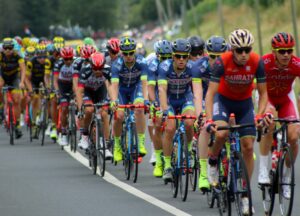
Road racers are far more upright with their weight on the saddle.
Aero Position – Why a Standard bike fit may come first.
Everything starts with a bike fit. A professional bike fit is one of the most cost-effective and high impact investments you will make. If you haven’t had a bike fit, put this on your priority list. The question is, what type of fit should you be considering?
If you are used to riding a road bike, we believe you should work towards the aero position in increments. If you opted to ride an aero position from the moment you began competitive riding, then a full aero position bike fit may work. Your body will likely be used to the position and will cope with the demands on yur body.
An intelligent approach to aero riding is to make changes strategically. For example, suppose you are currently riding a standard road bike geometry. In that case, you should consider improving aerodynamics by upgrading equipment and clothing alongside a classic bike fit as your first step. A cautious approach like this will prevent your body from letting you down mid-stage and allow you time to adapt to the inevitable changes required for an aero position. So, we recommend that the first stage towards aero centred cycling is to become more aerodynamic and efficient as a complete unit – (rider and bike).
Discuss your goals with your bike fitter and have them set your bike up to allow maximum power output over your regular stage distances. At the very least, you should have your bike set up with your choice of shoes already made and clip-on tri-bars in place. Resist going for the maximum focussed position at the first fit. You will need to train and race with your new set-up so your body can adjust and you can monitor the impact of changes.
You may find that you adapt quickly, and your next fit can occur within weeks. However, if your body and performance are suffering from the more focussed position, delay your next bike fit a bit longer until your power delivery and physicality are more settled. When you finally achieve the full aero set-up, your ass will be a lot higher, and your front end much lower. The full aero position feels radically different from riding a standard road bike. You will need to learn how to brake, change gear and steer in a new way. It could take as many as three or four bike fits to reach full aero without damaging your performance.
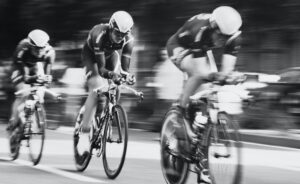
At the other Extreme, Time trial riders have their weight over the bike’s front end and saddles high.
Aero Position Cycling – Why your shoes are essential.
We will talk more about equipment upgrades later in this article. Shoes, however, are an integral part of your bike set-up. Cleated race shoes put your feet in a specific position on the pedals. If you are in the process of switching to a full aero position, you will need your cleat positions to be shimmed and adjusted at each stage of the transition.
For that reason, make sure you have bought the shoes you intend to race in before you pay for your set-up. Just a few millimetres difference in your cleats can make your bike feel vastly different and can even cause knee pain over distance. Once you have chosen a shoe style, stick with it for as long as you can. If you change your shoes, get another bike fit.
Aero Bars (Tri Bars) – add before your bike fit.
The other essential piece of equipment to have fitted before your first bike fit is your Tri (aero) bar set. These aftermarket accessories can be fitted to a standard road bike to allow a more aero position when in time-trial mode. Again, look for a professional bike fitter with experience in triathlon as they will be best placed to fine-tune your bike position.
The beauty of clip-on tri bars is that you can switch back to the familiar drops or hoods on your standard bars for climbing, gear changes and braking. Unfortunately, many triathletes have lost valuable time through missed gear changes, overshooting corners, or even losing confidence in equipment, due to riding an unfamiliar set-up. Every time you change your bike set up or add new equipment, make sure you spend enough hours in the saddle to get familiar with any changes in feel.
Top tips for beginner triathletes who want to go full aero:
- When addressing aerodynamics in the race season, consider starting with a standard bike fit, alongside upgrading all your equipment to more aerodynamic items as phase one.
- For phase two, make your significant changes in position during the closed season when you can practice and adapt your riding style without affecting race day performance.
- Don’t go full aero in one hit. Instead, work towards the lower front/higher saddle. On a road bike, a change of just a few millimetres of saddle height can throw your power and efficiency way out. It is all very well showing substantial time savings in an aero tunnel with a ten-minute session, but try keeping that up over the whole leg of a triathlon, and you could pop, blowing all your time savings.
- In any case, get your chosen professional bike fit with your race shoes and tri-bars in place.
Aero position cycling – Don’t forget your gear and equipment!
OK, you have managed to resist going full aero position, and your bike is now optimised in a satisfactory compromise between road and full aero position. Before your next fit, there are other steps you can take to improve your times in a race. It is time to start upgrading equipment. The good news is that equipment upgrades can happen all season round and will only improve your racing.
Aero Position Enhancements – Helmet.
An aero helmet has a teardrop shape which forms an efficient airflow around your head and along your more focused back position. Traditional road bike helmets cause far more drag and can many tens of seconds to your overall time on a cycling stage.
We recommend that your helmet be the next aerodynamic upgrade after the shoes, bars, and suitable combination.
Aero Position Enhancements – Wheels.
Carbon fibre aero wheels promise significant improvements when it comes to race times. But, of course, we at CES Sport build wheels, so we are fans of a wheel upgrade. You can watch a great video here for a third-party opinion on carbon aero wheels and why they matter. The short line is that at 200W (club ride levels) power output, aero wheels will average 2KM an hour more than a standard box wheel.
You can translate the time saving based on your performance levels; however, using aero wheels means being 2KM further down the road for every hour you ride. That has to be good.
You can check out our aero wheels here.
Aero position enhancements – Tri Suit
A tri-suit is another significant way of increasing your aerodynamic properties as a rider/bike unit. A good tri-suit is designed to work in all three disciplines. However, the tri-suit is particularly useful when cycling as it offers comfort, aerodynamic qualities, cycle jersey style storage and high-tech materials.
Look for a tri-suit that dries well, wicks sweat away from your body, and has enough storage for your needs.
Aero position enhancements – GPS/Cycle Computer.
Perhaps one of the less apparent tweaks you can make to your set-up, the use of a more aerodynamic and lightweight cycle computer, can save around 12 seconds over a 40KM stage. Unfortunately, many cycle computers are bulky and oversize for ease of use and clarity of detail.
Look for dedicated aero cycle computers that offer full navigation, performance metrics, and integration with your training platforms to maximise the data. For example, we are big fans of the aero focused Wahoo Element Bolt Bundle, designed with triathlon and time-trial in mind.
And finally:
There are many myths and misconceptions surrounding aerodynamics. Also, a lot of emphasis is put on high-ticket, high tech solutions. So here are some free tips to round up our look into maximising your aero position.
Imagine someone standing ahead of you and you riding straight at them. The footprint the observer sees is the area prone to wind resistance. Now that you are more focused on your bike, you can adopt a more aero position on the tri-bars. This position is called the “turtle”. Simply shrug your shoulders in tight to create a narrower front profile and extend your head as forward as is comfortable. This position will feel odd, to begin with, but the Turtle is the perfect position to maintain maximum aerodynamic properties on the tri-bars.
And what about shaving your legs? OK, this is a controversial subject. There are many ideas as to why cyclist shave their legs. Aerodynamics is the most popular theory about why cyclists are fans of depilation . The truth may be more aesthetically oriented, especially amongst road cyclists. Sure, there will be some marginal gains. Claims of between 10 and 30 seconds gain over 40KM can be found online. However, the main advantages of leg shaving may surprise you.
One clear advantage is that if you are unfortunate enough to crash, leg hair can cause severe friction burns. A crash with hairy legs will also make the cleaning of wounds more painful and time-consuming. Smooth legs mean an easy wipe down with antiseptic wipes and less congealment of road dirt. Another advantage for competitive cyclists is that the daily massage at the end of a long stage is a lot easier when your legs are shaved.
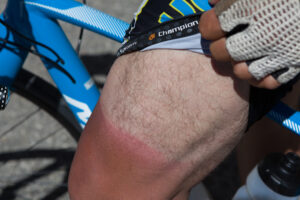
Application of sunscreen and end of day massages are easier with smooth legs. You will also sustain less severe friction burns should you crash. There may even be some marginal aero gains to be had. How high you shave is down to you!
Practicalities aside, whether or not you choose to shave is down to personal choice. Team CES is split on this subject. However, content writer Sean Holland did have a significant tumble descending into Cheddar Gorge and found roadside medical procedures were much more straightforward and that he was able to finish the ride. Also, on a month-long endurance ride, the daily application of sunscreen was much easier when shaved.
Whatever choices you make, becoming more aerodynamic and moving towards a full aero cycling position will knock significant chunks of time off your cycling stage.
Happy racing!
Team CES Sport.
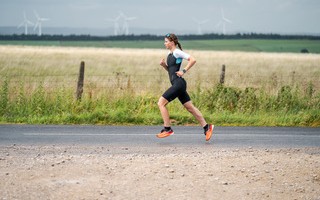
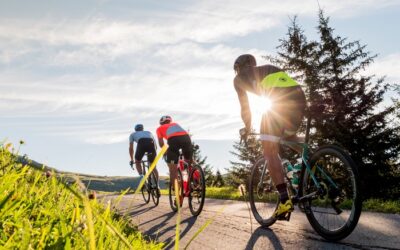

0 Comments